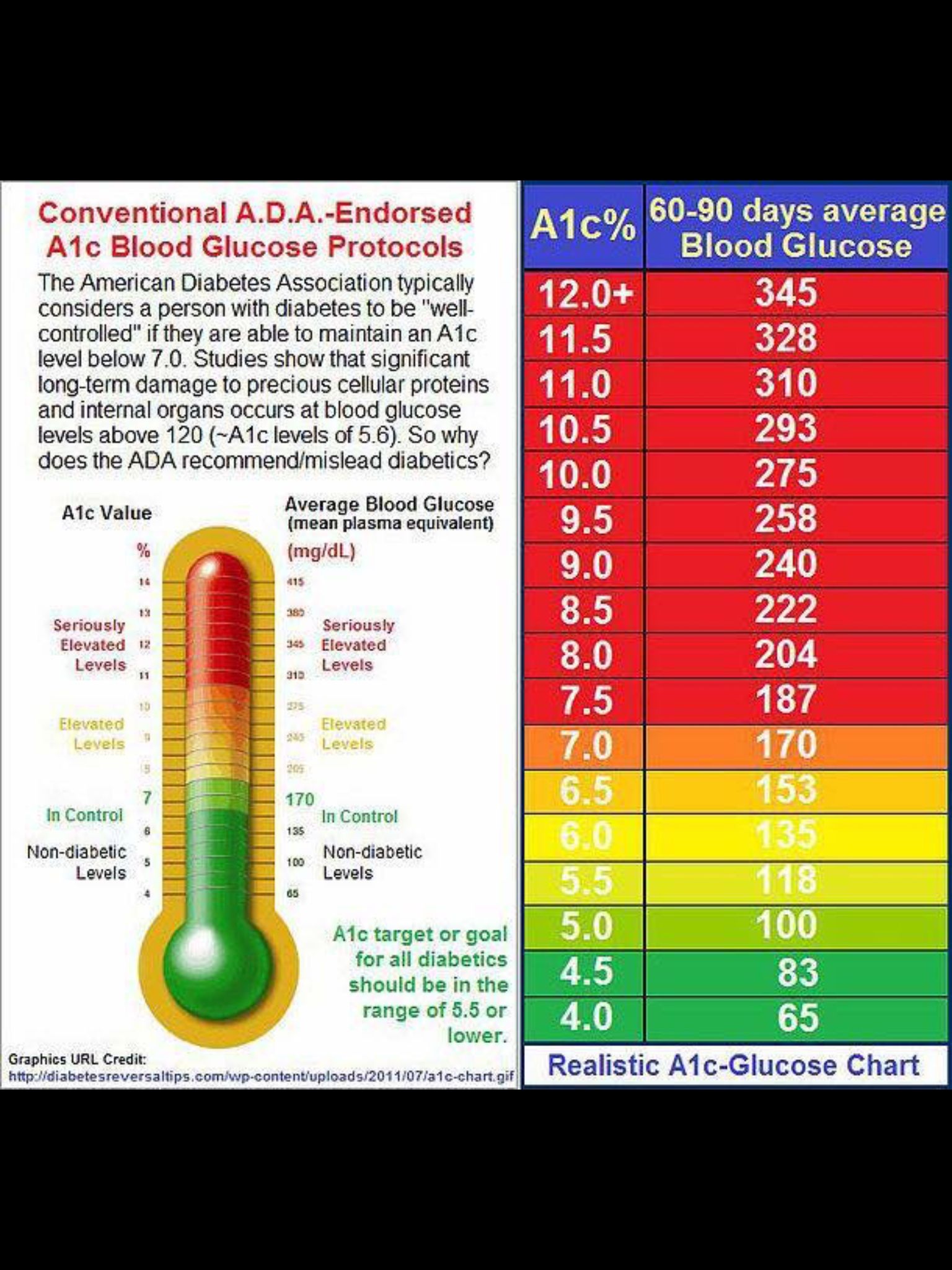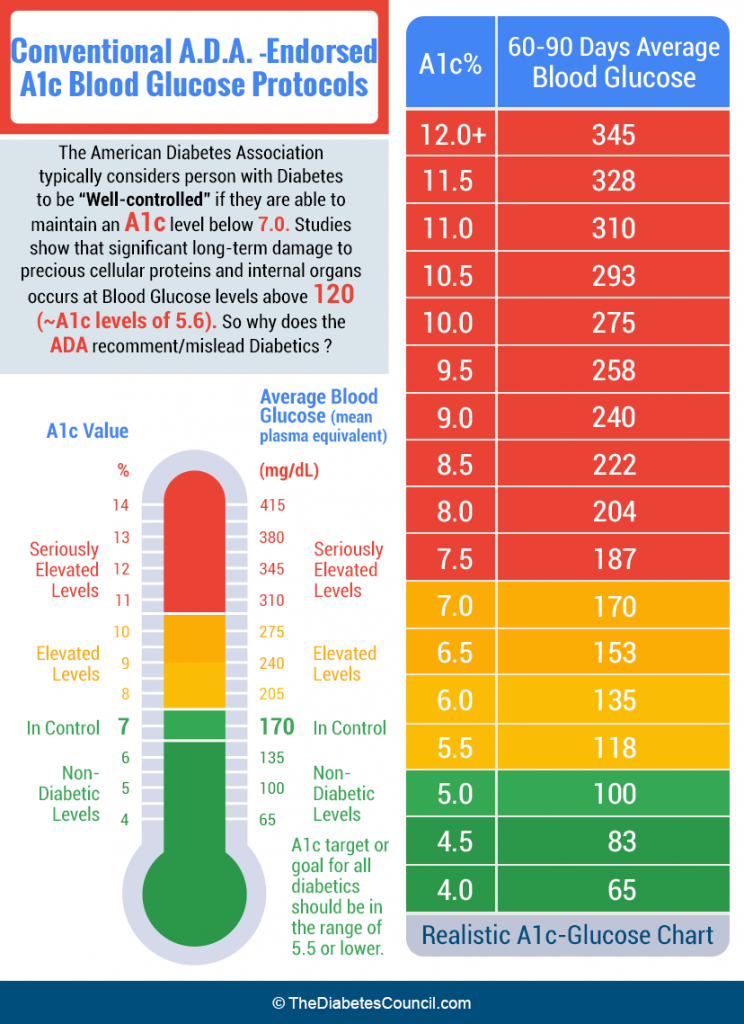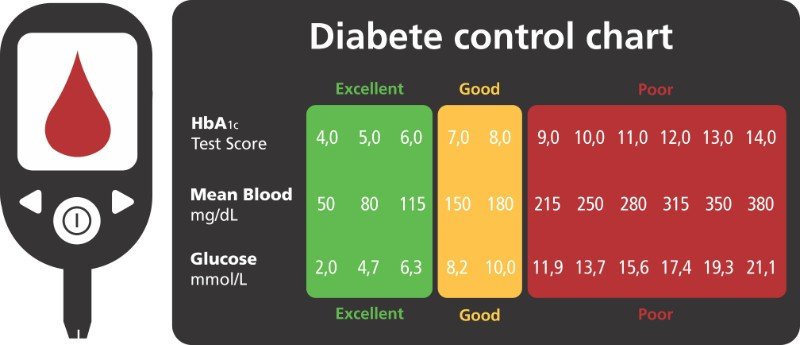What Is Normal Fasting Blood Sugar And What Is A Diabetes Blood Sugar Level
The results of the fasting blood sugar test will come back as a number:
- 99 mg/dL or lower: This is a normal fasting blood sugar level.
- 100125 mg/dL: Fasting blood sugar in this range typically indicates prediabetes. This means your blood sugar levels are higher than normal but not high enough to be classified as diabetes.
- 126 mg/dL or above: This indicates high blood sugar, the main sign of diabetes.
If you have a high fasting blood sugar level, your healthcare provider may repeat the test to make sure. If the test reveals that you have prediabetes, your healthcare provider will recommend you repeat the fasting blood sugar test every year or two. The results will help you know whether you are progressing to Type 2 diabetes.
Healthy Normal Sugar Levels In Diabetic Adults
Summary
Healthy diabetic adults should maintain a normal sugar level of 70 to 130 mg/dL before meals and less than 180 mg/dL after 2 hours of meals. Pregnant women should maintain a blood glucose level of 95-140 mg/dL to avoid complications. This can be done with the right habits in place that help you maintain your sugar level without getting stressed about it.
Remedies For Low Sugar Levels
If you experience any low sugar symptoms, immediately test your blood glucose levels. For levels between 60 to 80 mg/dL, consume 15 grams of fast-acting carbs. Repeat the test after 15 minutes and eat till sugar levels settle to normal.
But if the levels are below 50 mg/dL and if the patient is conscious and able to eat, give 15 gm. of fast-acting carbs. But if the patient is unable to speak, dont give him anything to eat. Call emergency services immediately. If possible, administer glucagon via injection.
Chart showing levels of sugar i.e excellent, good, or action suggested
Read Also: Type 2 Diabetes In Men
Signs And Symptoms Of Gestational Diabetes
Most pregnant women dont experience signs or symptoms of gestational diabetes. In fact, the only way to know is with a blood sugar test, typically given around 24 to 28 weeks gestation.
A few women may notice subtle signs and symptoms of gestational diabetes, including:
- Increased thirst. Drinking more than normal and feeling like youre always thirsty may be a sign of gestational diabetes.
- Fatigue. Pregnant women are tired, after all its a lot of work to grow and support a baby! However, gestational diabetes can make you feel even more tired than normal.
- Dry mouth. A parched mouth despite drinking a lot can be another sign of gestational diabetes.
You May Like: Mens Low Cut Diabetic Socks
What Are Blood Sugar Levels

Your blood sugar levels, also known as blood glucose levels, are a measurement that show how much glucose you have in your blood. Glucose is a sugar that you get from food and drink. Your blood sugar levels go up and down throughout the day and for people living with diabetes these changes are larger and happen more often than in people who don’t have diabetes.
Also Check: What Insulin Pumps Are Covered By Medicaid
Official Hba1c Ada Recommendation For Someone With Diabetes
The American Diabetes Association recommends an HbA1C of less than 7% for most nonpregnant adults with diabetes. A lower goal, such as less than 6.5%, may be appropriate for some people who have had diabetes for a shorter amount of time, for younger people, for those without heart disease, and/or for those with type 2 diabetes treated with lifestyle or metformin only. A higher HbA1C goal, such as less than 8%, may be appropriate for people with a history of severe hypoglycemia, a limited life expectancy, advanced diabetes complications, other illnesses, or for whom a lower HbA1C goal is difficult to achieve. Its important that people with diabetes discuss their target blood sugar goals with their health care provider.
HbA1C levels should be checked between two to four times per year in people who have diabetes.
What Is Considered A Normal Blood Sugar Level
The normal blood sugar level for a healthy, non-diabetic adult is determined by when and how blood sugar levels are tested.
The below information describes what normal blood sugar levels are prior to and after meals and what the recommended HbA1c and Haemoglobin A1c levels are for those with and without diabetes.
If you are diabetic, it is advisable to consult with your doctor in order for appropriate blood sugar level targets to be set based on your age, the severity of your condition, medications taken and overall health status.
Also Check: What Will Diabetes Do To Your Body
How Gestational Diabetes Can Affect Your Pregnancy
Most women with gestational diabetes have otherwise normal pregnancies with healthy babies.
However, gestational diabetes can cause problems such as:
- your baby growing larger than usual this may lead to difficulties during the delivery and increases the likelihood of needing induced labour or a caesarean section
- polyhydramnios too much amniotic fluid in the womb, which can cause premature labour or problems at delivery
- premature birth giving birth before the 37th week of pregnancy
- pre-eclampsia a condition that causes high blood pressure during pregnancy and can lead to pregnancy complications if not treated
- your baby developing low blood sugar or yellowing of the skin and eyes after he or she is born, which may require treatment in hospital
- the loss of your baby though this is rare
Having gestational diabetes also means youre at an increased risk of developing type 2 diabetes in the future.
Dont Miss: How Did I Get Type 2 Diabetes
Chart Of Normal Blood Sugar Levels For Adults With Diabetes Age Wise
The amount of glucose present in blood fluctuates during the day and at night. Our body maintains a level of blood glucose for metabolism. The normal sugar level in a healthy body is between 90 to 100 mg/dL. But sometimes, these blood sugar levels may go high or low due to various factors. Such high or low blood glucose levels are signs of health conditions that need/ require attention and blood glucose can be kept at healthy levels with various Diabetes Reversal Methods and medical attention. This article gives in-depth information about normal blood sugar levels chart for adults with diabetes according to age.
Recommended Reading: What Foods Raise Blood Sugar Quickly
Blood Sugar Level Charts For Those With Diabetes
Normal blood sugar levels, for those with diabetes, will vary depending on someones age and the time of day. For example, when fasting, blood sugar levels are often in the target goal range. The type of food eaten will impact blood sugar levels in different ways. A meal with a lot of carbohydrates will raise blood sugar quicker than a meal that contains carbohydrates, protein, and fat . Blood sugar will rise after a meal, but will start to return to normal levels in several hours.
Lets take a look at what blood sugar levels should be, in those with diabetes, based on their age.
How To Diagnose Blood Sugar Level
Its possible to check your glucose level without a glucose meter by pricking your finger with a clean needle and putting the drop of blood on a strip that has been dipped in a special liquid. The strip will show your blood sugar level in both mg/dL and mmol/L.
A fasting blood glucose level is the amount of glucose in a persons blood after they have not eaten for about 8 hours. The level is usually around 100 milligrams per deciliter . Its possible to measure it using a glucose meter. 80-99 mg/dL is the right amount of sugar to be present in the blood.
Don’t Miss: How To Use Glucose Meter
The Ada Guidelines For Blood Glucose Control Are:
| After Meal Glucose Level | < 180 mg/dl |
*Hemoglobin is a measure of your average blood glucose control over the previous 3 months. Think of the A1c as a long-term blood glucose measure that changes very gradually.
Of course, these are general standards for everyone with diabetes both type 1 as well as type 2. Ask your diabetes team for personalized goals and blood sugar monitoring schedules.
For example:
When you have type 1 diabetes you are treated with insulin replacement therapy. The goal is to replace the insulin in the right amount and at the right time. Sometimes, more insulin than needed is taken and this will cause hypoglycemia.
To minimize this risk, many providers will recommend that individuals treated with insulin target a pre-meal blood sugar of 90-130 mg/dl and post meal blood sugar of less than 180 mg/dl.
Also, if you are experiencing a lot of hypoglycemia or have hypoglycemic unawareness your provider may suggest you target higher blood sugar levels.
In contrast, pregnant women or women thinking about getting pregnant will have lower blood glucose targets.
GET SMART ABOUT YOUR BLOOD SUGAR. CHECK IT REGULARLY!
Normal Blood Sugar Levels In Children With Diabetes According To Age

Summary
Read Also: Is Type 2 Diabetes Treated With Insulin
Symptoms Signs Causes Of Levels Of High Blood Sugar In The Blood
High blood sugar or hyperglycemia is an abnormally high blood sugar level in the blood. Hyperglycemia is a hallmark sign of diabetes and prediabetes.
Signs and symptoms of hyperglycemia include blurred vision, headaches, hunger, and …
The normal ranges for blood sugar levels in adults who do not have diabetes while fasting are 72-99 mg/dL. These ranges may increase to 80-130 mg/dL for those being treated for diabetes.
According to the American Diabetes Association, people with diabetes should have
- blood sugar levels of 80-130 mg/dL before eating a meal , and
- less than 180 mg/dL about 1-2 hours after eating a meal
High blood sugar ranges for people who dont have diabetes begin at 140 mg/dL, while those being treated for diabetes have a high range beginning at 180 mg/dL.
What Is Blood Glucose Anyway
Blood glucose, or sugar, is sugar that is in your blood . It comes from the food that you eat foods that contain carbohydrate, such as bread, pasta and fruit are the main contributors to blood glucose. The cells in our bodies need glucose for energy and we all need energy to move, think, learn and breathe. The brain, which is the command center, uses about half of all the energy from glucose in the body.
Read Also: Low Blood Pressure And Low Blood Sugar
Tests For Gestational Diabetes
Gestational diabetes is diagnosed using blood tests. Youll probably be tested between 24 and 28 weeks of pregnancy. If your risk is higher for getting gestational diabetes , your doctor may test you earlier. Blood sugar thats higher than normal early in your pregnancy may indicate you have type 1 or type 2 diabetes rather than gestational diabetes.
Normal Sugar Level In Healthy Individuals
Blood glucose levels, also known as blood sugar levels, can be normal, high, or low. The sugar levels are generally measured after 8 hours of eating.
A normal blood sugar range for a healthy adult after 8 hours of fasting is > 70 mg/dL. and < 100 mg/dL.
While a normal sugar level in a healthy person after 2 hours of eating is between 90 to 100 mg/dL.
Blood glucose levels change throughout the day. Major factors affecting such change in the blood glucose levels are as follows:
Summary
Don’t Miss: What Type 2 Diabetes Medication Has The Least Side Effects
Symptoms Of Gestational Diabetes
Pregnancy diabetes has no visible indications or symptoms in the majority of women. Symptoms include increased thirst and the desire to pee more often. If at all feasible, get medical treatment as soon as you consider becoming pregnant so that your doctor can analyze your risk of gestational diabetes as well as your overall health.
As part of your prenatal care, your doctor will check for gestational diabetes once youre expecting. You may require more regular visits if you have gestational diabetes. These are most often done in the latter three months of pregnancy, when your doctor will be monitoring your blood glucose levels as well as the health of your baby.
Normal Hba1c For Person Without Diabetes
For someone who does not have diabetes, a normal HbA1C level is below 5.7%. An A1C between 5.7% to 6.4% is indicative of prediabetes.
Its recommended that adults over the age of 45 or adults under 45 who are overweight and have one or more risk factors for diabetes have a baseline A1C checked. If the result is normal, the A1C should be checked every three years. If the result indicates prediabetes, the A1C should be checked every one to two years.
Recommended Reading: Blood Sugar Levels After Meals For Diabetics
Fasting Blood Sugar Test
This test can be done in the lab or the healthcare providers office with a simple finger stickor your doctor may prescribe a meter and have you test regularly at home.
A fasting blood sugar level indicates what your blood sugar is when you havent eaten for at least 8 hours. For adults without diabetes, a normal fasting blood sugar is less than 100 mg/dL. A fasting blood sugar level of 100-125 mg/dL indicates prediabetes, and 126 mg/dL or higher indicates diabetes.
How Do You Manage Blood Sugar

It’s not easy to manage your blood sugar, but it’s important to do so if you have diabetes. There are many things you can do to keep your blood sugar levels in the healthy range.
The first step is to understand what causes your blood sugar levels to go up and down. This will help you make choices that keep your blood sugar levels within your target range.
You May Like: Glucose 2 Hours After Eating
What Is The Normal Blood Sugar Level For Kids
Blood sugar levels can vary based on age. Children younger than 6 have a different normal blood sugar level range than adults.
The American Diabetes Association provides the following ranges as a guide:
- Fasting: 80-180 mg/dL
- Preprandial : 100-180 mg/dL
- Postprandial : Less than 180 mg/dL
- Bedtime: 110-200 mg/dL
Recommended Blood Glucose Targets For People With Diabetes
| AIC* | Fasting blood glucose/ blood glucose before meals | Blood glucose two hours after start of meal |
| Target for most patients with diabetes | 7.0% | |
| If A1C targets not being met** | 4.0 to 5.5 | 5.0 to 8.0 |
*An A1C is an average of your blood glucose levels over the past three months. Learn more about the A1C here.
**Must be balanced against the risk of hypoglycemia
You May Like: What’s Insulin Used For
Translating Your A1c To A Blood Sugar Level
Using this easy calculator from the ADA, you can translate your most recent A1C result to an eAG or estimate average glucose level.
You can also use this translation when working to improve your A1c and achieve closer to normal blood sugar levels.
If you know an A1c of 6.5 is an average blood sugar level of 126 mg/dL or a range of 100 to 152 mg/dL, then you can look at your current blood sugar results on your CGM and meter and pinpoint which time of day youre frequently higher than this range.12% = 298 mg/dL or range of 240 347 11% = 269 mg/dL or range of 217 31410% = 240 mg/dL or range of 193 2829% = 212 mg/dL or range of 170 2498% = 183 mg/dL or range of 147 2177% = 154 mg/dL or range of 123 1856% = 126 mg/dL or range of 100 1525% = 97 mg/dL or range of 76 120
Normal blood sugar levels in a person without diabetes can result in an A1c as low as 4.6 or 4.7 percent and as high as 5.6 percent.
Just a decade or two ago, it was rare for a person with type 1 diabetes to achieve an A1c result below 6 percent. Thanks to new and improved insulin and better technology like continuous glucose monitors and smarter insulin pumps, more people with diabetes are able to safely achieve A1c levels in the higher 5 percent range.
Your blood sugar is influenced by the food you eat, your age, stress, physical activity, smoking, and alcohol use. It is also impacted by heart issues or diabetes, a group of conditions where too much glucose builds up in the bloodstream.